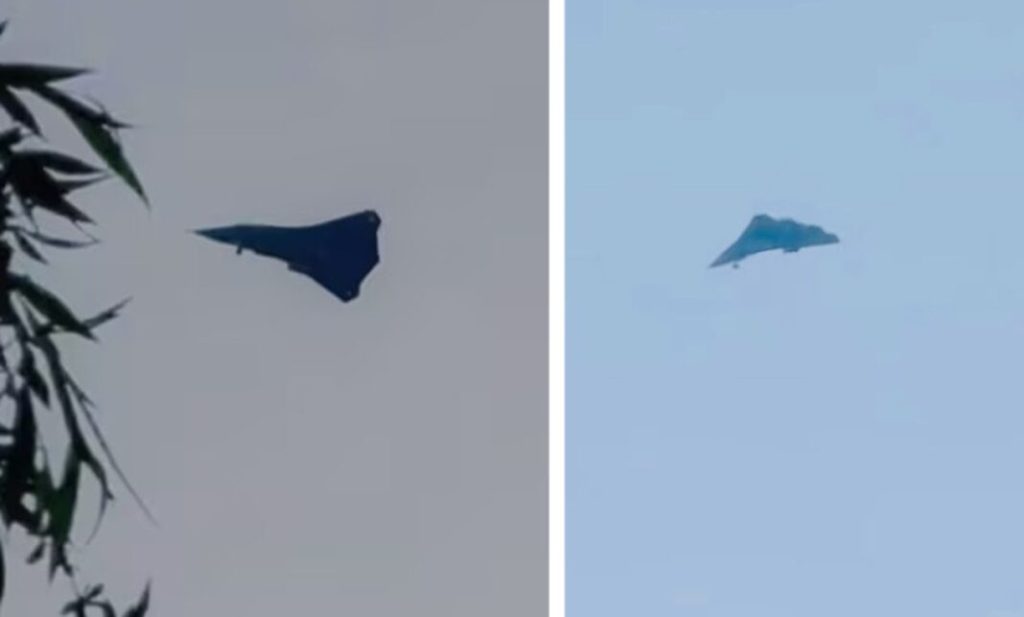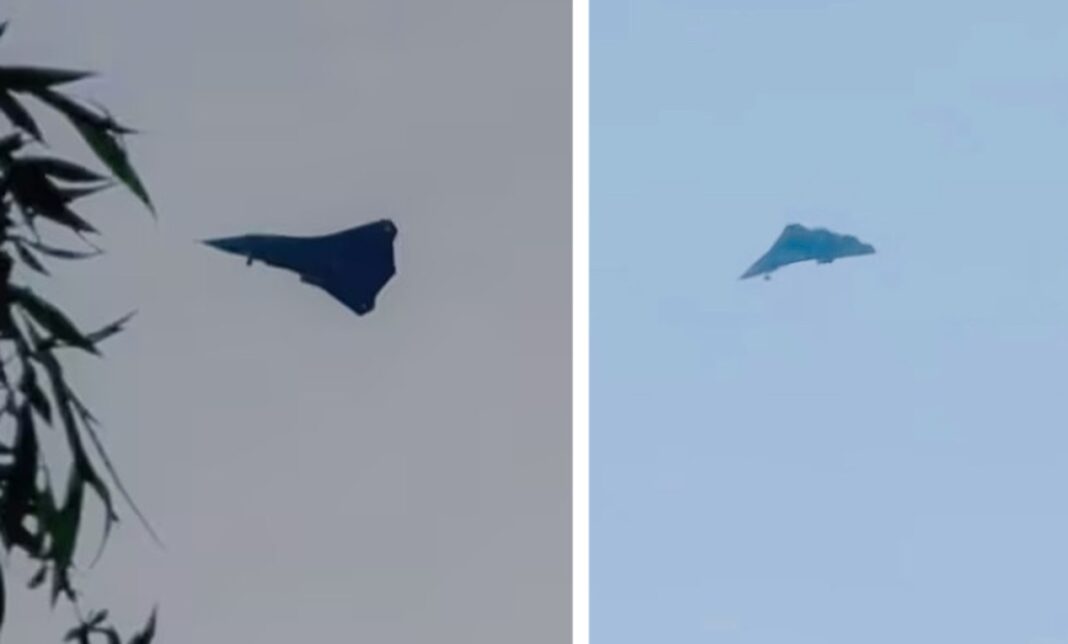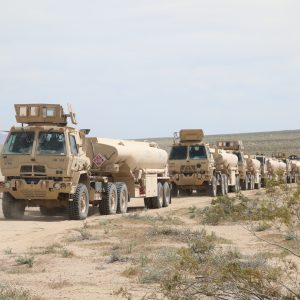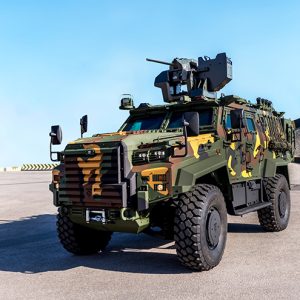A new image circulating on Chinese social media appears to show another next-generation stealth aircraft undergoing flight testing, marking the third distinct design sighted in recent months and highlighting China’s accelerated push to expand its advanced airpower programs.
Possible New UCAV in China’s Next-Gen Airpower Fleet
The unverified photo, lacking confirmed location and timestamp details, reveals a sharp-edged delta-wing platform with a long, narrow forward fuselage and a blended wing-body structure—design features typically associated with low radar cross-section and long-range strike missions.
Unlike the previously reported J-36 and J-50 stealth combat aircraft, this airframe’s silhouette suggests it could be a new crewed stealth bomber concept or a large unmanned combat aerial vehicle (UCAV).

“A third image of that mysterious CCA UCAV (?) was just posted by by78/SDF,” commented Andreas Rupprecht, a renowned military aviation analyst known for tracking Chinese aerospace programs.
Design Hints: Stealth and Long-Range Strike Capabilities
The photographed aircraft appears to lack vertical stabilizers, with a highly swept wing leading edge that matches modern stealth shaping trends. Its elongated forward fuselage hints at substantial internal payload space, potentially allowing for long-range precision strike missions without external hardpoints that compromise stealth performance.
Open-source intelligence communities in China have speculated that the aircraft may belong to a broader People’s Liberation Army Air Force (PLAAF) initiative to develop a family of unmanned or optionally manned strike platforms. These systems would complement or escort next-generation fighters like the J-50 in high-threat environments, increasing survivability and reach.
Third Sighting in 2025 Raises Strategic Questions
This sighting is the third such appearance of a mysterious prototype since early 2025. While the timing and location of the latest test flight remain unclear, the image confirms that at least one flyable prototype is under active evaluation.
If this platform is confirmed as a UCAV, it would align with global trends toward autonomous strike aircraft, following U.S. and European initiatives in the loyal wingman and stealth drone domains. China’s rapid pace of experimental stealth platform development signals its ambition to close capability gaps with Western air forces in long-range precision strike and survivable ISR missions.
Strategic Implications
The proliferation of experimental stealth platforms underscores China’s commitment to building a diversified, next-generation strike portfolio. Analysts note that such developments could enhance PLAAF’s ability to conduct high-risk missions, suppress enemy air defenses, and project power beyond the first island chain, potentially altering regional airpower balances.
For NATO and allied air forces, this emerging capability highlights the urgent need to accelerate counter-stealth detection, electronic warfare integration, and collaborative combat drone programs to maintain operational advantage in contested airspaces.
For further context on stealth UCAV developments and their role in future aerial warfare, see Breaking Defense for related analyses.
Tags: China, stealth aircraft, UCAV, PLAAF, next-generation fighter, military aviation, drone warfare








